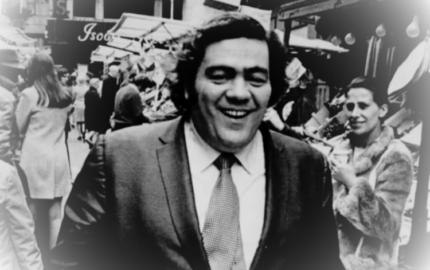Our latest Notable Narrative, “Spectacle: the lynching of Claude Neal,” comes from Ben Montgomery of the Tampa Bay Times.
Montgomery reports that Neal, a 23-year-old African-American farmhand, was arrested in 1934 on suspicion of the rape and murder of a young white woman. Hidden from white mobs for days, he was eventually taken at gunpoint from a jailer. A lynching party was set up; invitations were issued. The governor of Florida, along with millions of others, knew of the publicly announced plans to kill Neal, but no state or federal investigators intervened in Florida. What happened afterward was horrific. No one was ever arrested or prosecuted.
The narrative sticks with the third person, and the writing is subdued and steady, as if to say, It’s okay, you can keep reading. I’ll be right here with you. The story is rooted deeply in place, and Montgomery evokes the landscape and the era in one beautifully compact paragraph.
While the details of the story are terrible, Montgomery keeps away from thundering indictments, letting events speak for themselves. It seems entirely possible that Neal did commit the murder that sparked the mob's fury, but the community's response was beyond barbaric, and the story shows how the devastation inflicted on the family continues to echo down the years.
Some of the living know who was responsible for the murder of Claude Neal, but if they were to name the killers (all dead now), what kind of hatred and judgment, they ask, would be heaped on the killers’ innocent descendants? Montgomery does not even need to point out what is implicit in the tale. If Neal's executioners remain anonymous, his family will have to continue to bear the weight of history alone.
The ending of the story is a beginning – in the last paragraphs, the FBI arrives to investigate. No doubt there will be more to report in the coming months and years, but for now, the narrative draws literal and symbolic closure from the fact that justice has stepped in to address racism and vigilante justice, even if it has come 77 years too late.
Visit the Times’ site to see Edmund Fountain's striking video and photos for the project. And read our interview with Ben Montgomery about “Spectacle.”
Montgomery reports that Neal, a 23-year-old African-American farmhand, was arrested in 1934 on suspicion of the rape and murder of a young white woman. Hidden from white mobs for days, he was eventually taken at gunpoint from a jailer. A lynching party was set up; invitations were issued. The governor of Florida, along with millions of others, knew of the publicly announced plans to kill Neal, but no state or federal investigators intervened in Florida. What happened afterward was horrific. No one was ever arrested or prosecuted.
The narrative sticks with the third person, and the writing is subdued and steady, as if to say, It’s okay, you can keep reading. I’ll be right here with you. The story is rooted deeply in place, and Montgomery evokes the landscape and the era in one beautifully compact paragraph.
Jackson County, Florida, 1934: Drip coffee, Purity Ice Cream, turnips, chuck roast, mustard for 15 cents a quart, 26 cents for a dozen eggs. Sun-bleached overalls, Baptists, Methodists, kerosene lamps, screen doors, mosquitoes, pine trees, knee stains, brick chimneys, K & K Grocery, and cotton, 12 cents a pound. Cotton on the roadside and cotton in the ditch and cotton in forever rows stretched across fields flat as tabletops.
While the details of the story are terrible, Montgomery keeps away from thundering indictments, letting events speak for themselves. It seems entirely possible that Neal did commit the murder that sparked the mob's fury, but the community's response was beyond barbaric, and the story shows how the devastation inflicted on the family continues to echo down the years.
Some of the living know who was responsible for the murder of Claude Neal, but if they were to name the killers (all dead now), what kind of hatred and judgment, they ask, would be heaped on the killers’ innocent descendants? Montgomery does not even need to point out what is implicit in the tale. If Neal's executioners remain anonymous, his family will have to continue to bear the weight of history alone.
The ending of the story is a beginning – in the last paragraphs, the FBI arrives to investigate. No doubt there will be more to report in the coming months and years, but for now, the narrative draws literal and symbolic closure from the fact that justice has stepped in to address racism and vigilante justice, even if it has come 77 years too late.
Visit the Times’ site to see Edmund Fountain's striking video and photos for the project. And read our interview with Ben Montgomery about “Spectacle.”


